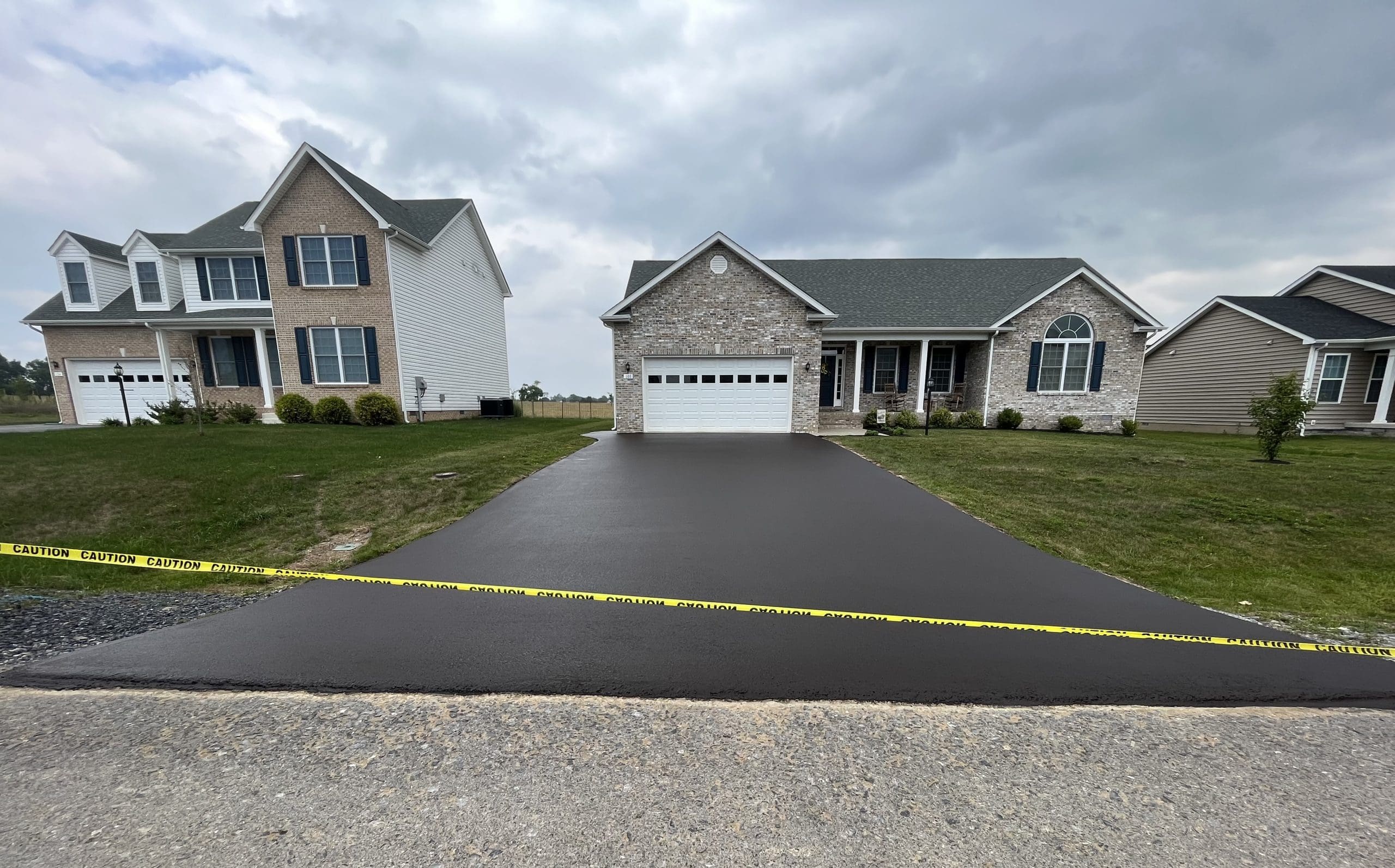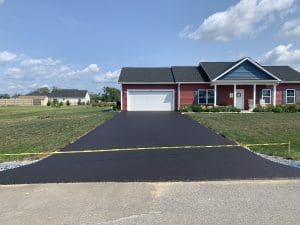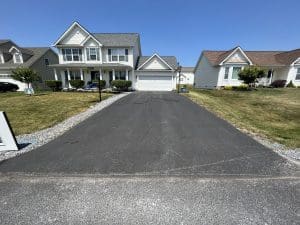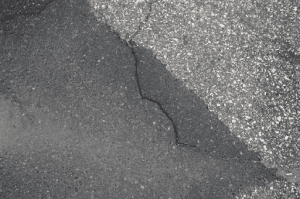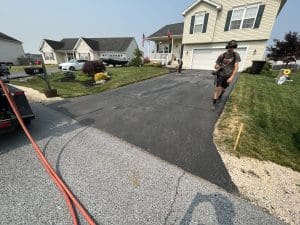When Is the Best Time to Schedule Sealcoating? Seasonal Tips for Optimal Results
The condition of your pavement plays a crucial role in maintaining the overall appearance and functionality of your property. Over time, exposure to harsh weather conditions, heavy traffic, and environmental factors can cause your pavement to deteriorate. To minimize damage and prolong the lifespan of your pavement, sealcoating is key. But when is the best time to schedule sealcoating? In this article, we will explore the seasonal tips for optimal results when it comes to sealcoating your pavement.
Understanding Sealcoating and Its Importance
Before delving into the best time to schedule sealcoating, it’s important to understand the basics of sealcoating and why it is essential for your pavement. Sealcoating is a protective layer applied to asphalt surfaces to shield them from damage caused by harsh weather conditions, UV rays, oil leaks, and other pollutants. It helps to prevent premature cracking, fading, and deterioration, ultimately extending the life of your pavement.
Sealcoating is a simple process that involves applying a coal tar or asphalt-based emulsion to the surface of your pavement. Once applied, it dries and forms a protective layer, creating a barrier between your pavement and the elements. Sealcoating can help to rejuvenate the appearance of your pavement, making it look fresh and inviting.
But why is sealcoating essential for your pavement? The answer lies in the numerous benefits it offers. Firstly, sealcoating protects against moisture penetration, which is one of the leading causes of pavement damage. When water seeps into the pavement, it can weaken the structure and lead to cracks, potholes, and other forms of deterioration. By preventing moisture from seeping into the pavement, sealcoating acts as a barrier, preserving the integrity of your pavement.
Additionally, sealcoating acts as a shield against UV rays. Over time, exposure to sunlight can cause the pavement to fade and lose its color. UV rays can also break down the binders in the asphalt, leading to premature cracking and deterioration. By applying a protective layer of sealcoating, you can effectively block out the harmful UV rays, keeping your pavement looking vibrant and extending its lifespan.
Furthermore, sealcoating helps to resist oil leaks and other pollutants. Vehicles can often leak oil, gasoline, and other fluids onto the pavement, which can cause staining and damage. Sealcoating creates a barrier that prevents these substances from penetrating the asphalt, making it easier to clean and maintain the appearance of your pavement.
It’s worth noting that sealcoating is not a one-time fix. To ensure maximum protection and longevity for your pavement, it’s recommended to schedule regular sealcoating applications. The frequency of sealcoating depends on various factors, such as the climate, traffic volume, and overall condition of the pavement. Consulting with a professional sealcoating contractor can help you determine the best maintenance schedule for your specific pavement.
In conclusion, sealcoating is a vital step in preserving the integrity and appearance of your pavement. By applying a protective layer, sealcoating shields your pavement from the damaging effects of moisture, UV rays, oil leaks, and other pollutants. Regular sealcoating applications can significantly extend the lifespan of your pavement, saving you time and money in the long run.
Factors Influencing the Timing of Sealcoating
When it comes to sealcoating, timing is crucial. The success of the sealcoating process and the longevity of its results depend on various factors, including weather conditions and temperature. Let’s explore these factors in more detail.
Weather Conditions and Sealcoating
Weather conditions have a significant impact on the success of the sealcoating process. Ideally, sealcoating should be done when the weather is dry and clear. Rain or excessive humidity can interfere with the drying process of the sealcoating material, resulting in an uneven finish or even wash away the newly applied sealcoat. It’s best to avoid scheduling sealcoating during rainy seasons or when there is a high chance of precipitation.
The Role of Temperature in Sealcoating
Temperature also plays a crucial role in the sealcoating process. The ideal temperature for sealcoating is between 50°F and 85°F (10°C to 29°C). Extreme temperatures, whether too hot or too cold, can affect the durability and adhesion of the sealcoating material. Sealcoating in extremely hot temperatures can cause the material to dry too quickly, resulting in a less effective sealcoat. Similarly, sealcoating in freezing temperatures can prevent the material from curing properly, leading to a weaker bond.
Seasonal Guide to Sealcoating
Now that we understand the importance of sealcoating and the factors that influence its timing, let’s explore the optimal time to schedule sealcoating based on the different seasons.
Spring Sealcoating: Pros and Cons
Spring is typically a popular time for sealcoating. The weather is mild, and the chances of rain or extreme temperatures are relatively low. However, one drawback of spring sealcoating is that it can coincide with a high demand for sealcoating contractors. It’s important to schedule your sealcoating well in advance to ensure availability.
Summer Sealcoating: Advantages and Disadvantages
Summer is another favorable season for sealcoating due to the warmer temperatures and lower chances of rain. However, the high temperatures can cause the sealcoating material to dry more quickly, making it challenging for contractors to achieve a smooth and even finish. It’s important to work with experienced professionals who can adapt to the summer conditions and apply the sealcoating efficiently.
Autumn Sealcoating: Benefits and Drawbacks
Autumn is considered an ideal time for sealcoating because the weather is cooler, the chances of rain are relatively low, and there is less demand for sealcoating services. However, it’s crucial to complete the sealcoating process before the temperatures drop too low, as extreme cold can affect the curing process of the sealer. Planning ahead and scheduling sealcoating early in the season can help you take full advantage of the autumn weather.
Winter Sealcoating: Feasibility and Challenges
Sealcoating during winter poses significant challenges due to the cold temperatures. Most sealcoating contractors do not offer their services during winter as the freezing temperatures prevent the sealcoating material from curing properly. However, in regions with mild winters or during unseasonably warm periods, it might be feasible to schedule sealcoating. It’s important to consult with professionals familiar with your local climate and pavement conditions to determine if winter sealcoating is a viable option.
Tips for Scheduling Your Sealcoating
Now that we have discussed the optimal timing for sealcoating based on the seasons, let’s explore some tips to help you schedule your sealcoating project.
Planning Your Sealcoating Schedule
Make sure to plan well in advance and contact sealcoating contractors early to secure a preferred date. Keep in mind that reputable contractors may have busy schedules, especially during peak seasons. By contacting them early, you can ensure that your pavement receives the attention it deserves.
Pre-Sealcoating Preparations
Prior to scheduling sealcoating, it’s crucial to prepare your pavement adequately. This includes clearing the surface of any debris or vegetation, repairing cracks and potholes, and thoroughly cleaning the pavement. Adequate preparation ensures a smooth application and maximizes the effectiveness of the sealcoating process.
Ensuring Optimal Results from Your Sealcoating
While scheduling sealcoating at the right time is crucial, ensuring optimal results also requires proper post-sealcoating care and maintenance. Let’s explore some key tips in this regard.
Post-Sealcoating Care and Maintenance
After sealcoating, it’s essential to allow the material ample time to cure and dry. Avoid driving or parking on the freshly sealcoated surface for at least 24 to 48 hours. Additionally, regular sweeping and cleaning can help prevent the accumulation of debris that can degrade the sealcoating over time. Routine maintenance, such as crack sealing and periodic resealing, can significantly prolong the life of the sealcoating.
Troubleshooting Common Sealcoating Issues
Despite proper care and maintenance, sealcoating can sometimes encounter issues such as cracking, bubbling, or fading. Identifying and addressing these issues promptly is crucial to maintaining the integrity of the sealcoating. Consulting with sealcoating professionals can help troubleshoot these problems and provide effective solutions to ensure the longevity of your pavement.
In conclusion, the best time to schedule sealcoating depends on various factors, including weather conditions, temperature, and the specific requirements of your pavement. By understanding these factors and considering the pros and cons of each season, you can optimize the results of your sealcoating project. Remember to plan ahead, prepare your pavement appropriately, and provide proper care and maintenance to enjoy the benefits of a well-protected and visually appealing pavement for years to come.
